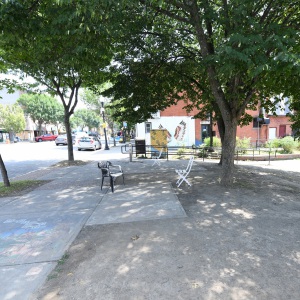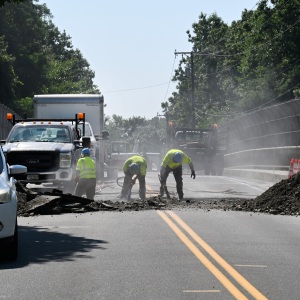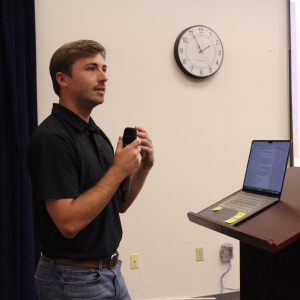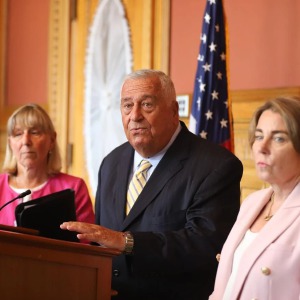Velis, Domb lead new state commission tackling xylazine crisis in drug supply
|
Published: 06-30-2025 8:00 AM
Modified: 06-30-2025 8:31 AM |
A new commission tasked with making recommendations on ways to address public health and safety concerns posed by the proliferation of xylazine as an additive to illicit drugs met for the first time last week at the first of five public hearings.
Co-chaired by area lawmakers Sen. John Velis, D-Westfield, and Rep. Mindy Domb, D-Amherst, the commission, which was established as part of a large substance use disorder bill signed into law last year, heard from a bevy of health care experts at the June 23 hearing about the dangers of xylazine.
In addition to Velis and Domb, the so-called Special Legislative Commission on Xylazine is made up of other state legislators, public health officials and law enforcement personnel.
Velis, who is also Senate chair of the Joint Committee on Mental Health, Substance Use and Recovery, helped establish the commission because he believes it is crucial to address the growing prevalence of xylazine, a veterinary sedative, and other additives in opioid-related overdose deaths.
“We need to really treat this as a contaminated drug supply commission because the reality is this, that it’s xylazine today, it’s something else tomorrow,” Velis said in an interview. The senator said that if there is a lack of general awareness about drug supply contamination, there is a risk of fatalities.
During the more than two hours of public testimony, Velis, along with Domb, outlined the legislative charge for the commission and hosted a panel of speakers, including public health officials, health care workers and law enforcement. Throughout the meeting, several themes arose: awareness, education and access.
Several speakers, including Deirdre Calvert, director of the Bureau of Substance Addiction Services at the Massachusetts Department of Public Health, talked about how a lot of drug users are unaware of contaminated drug supplies.
Public health experts are still studying the effects of xylazine, and a lack of information is also challenging for health care providers and first responders to navigate.
Article continues after...
Yesterday's Most Read Articles
 17-year-old Hatfield resident killed in Deerfield crash
17-year-old Hatfield resident killed in Deerfield crash
 Community rallies to support family of Hatfield teen in fatal crash
Community rallies to support family of Hatfield teen in fatal crash
 Park bench to be returned, moved to new location at Greenfield pocket park
Park bench to be returned, moved to new location at Greenfield pocket park
 Colrain Street bridge over Interstate 91 temporarily closed in Greenfield
Colrain Street bridge over Interstate 91 temporarily closed in Greenfield
 Residents, solar companies weigh in on revisions to state’s solar incentives program
Residents, solar companies weigh in on revisions to state’s solar incentives program
 Ashfield mulls regionalizing emergency services
Ashfield mulls regionalizing emergency services
“The reality is ... that the drug supply is evolving faster than our systems can keep up with it. And it really leaves the people we serve, people who use drugs, harm reduction teams, first responders and the public fully unprepared, putting their lives at risk,” Raagini Jawa, assistant professor of medicine at the Center for Research on Health Care, who has been working in the epicenter of the xylazine contamination in Pennsylvania for the last few years and led national educational efforts on xylazine.
Dr. Sarah Wakeman, senior medical director for substance use disorder at Mass General Brigham, spoke about the specific health issues that xylazine causes, including heavy sedation, which can lead to major safety issues and necrotic skin wounds. These types of wounds can occur away from the sites of local injection, even for people who smoke or sniff substances. Without treatment, they can lead to tissue death and necessitate amputation, Wakeman said.
In 2025, xylazine shifted from being just an adulterant to a common component in the unregulated opioid supply, and its effects are still being studied. This lack of information has led patients and health care providers to struggle with unfamiliar symptoms.
Several panelists spoke to the effect of stigma on those seeking treatment for xylazine-related wounds, including Alan Young, a recovery coach who has 15 years of lived experience in addiction and recovery.
“When you’re in the cycle of disease of active addiction, it’s easy for us on the outside to say what they should be doing, but ... behind an active disease that’s running rampant, there is no thought process other than ‘I don’t want to be sick and I need the next one,’” Young said. “This is a public health crisis that is affecting all of us, you know, from the drug users to the taxpayers.”
Wakeman said that stigma around xylazine can discourage people from seeking medical treatment for their wounds.
“I’ve heard many times that even when people have terrible wounds, they avoid coming to the hospital because of the stigma and the medical trauma that they’ve experienced in the past,” she said. “We need resources for hospital-based substance use and harm reduction services so that trauma-informed, high-quality substance use services are available in all health care settings across the commonwealth.”
According to Jawa’s research, three-fourths of the people in Massachusetts received wound care at syringe service programs, not at medical settings. Jawa also found that one-fifth of the people experienced being denied detox or rehab for wounds.
However, in the same study, Jawa found that many people who realized they had been exposed to xylazine after experiencing its physical effect or harm would dispose of the drugs or switch suppliers if they had access to drug testing that showed xylazine in their drugs.
Panelists made several recommendations at the hearing, including launching educational campaigns and materials, expanding access to low-barrier care services, reducing stigma in the health care system, and expanding access to wound care services and supplies, including the use of mobile care vans that provide wound care kits and naloxone, also known as Narcan.
Multiple panelists also recommended expanding access to drug checking and shifting the focus from criminalizing people who use drugs to a public health approach where providers can respond to and try to prevent the growing contamination of the drug supply.
“It’s about meeting people where they are,” Velis said, saying that if people aren’t ready to go on medication for opioid use disorder or pursue an abstinence case program, informing them that their drug supply is contaminated can help them make educated decisions and ultimately reduce harm.
The commission will hold four more public hearings before it files a report, including any legislation necessary to implement its recommendations, by March 30, 2026. The next hearing is set for early fall.
“I am absolutely convinced that the No. 1 way that you push back on stigma is just by having public conversations,” Velis said. “There is a whole underworld in Massachusetts and beyond that we don’t like to talk about. ... We need to talk about it and we need to talk about it openly because at the end of the day, we’re talking about fellow human beings and getting them the help that they so obviously deserve.”








 Greenfield Health Board to review tobacco license regs
Greenfield Health Board to review tobacco license regs Bar advocates dispute Beacon Hill's forecast for labor crisis resolution
Bar advocates dispute Beacon Hill's forecast for labor crisis resolution
